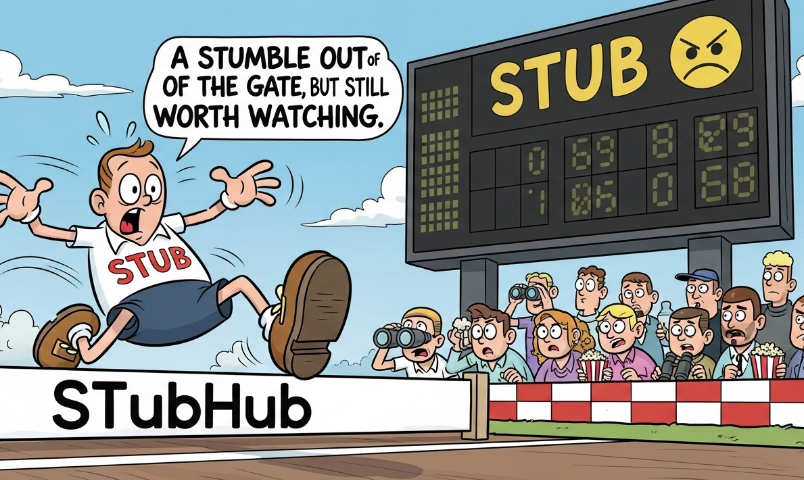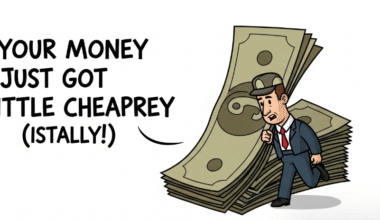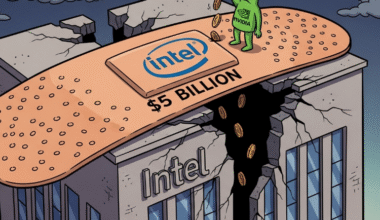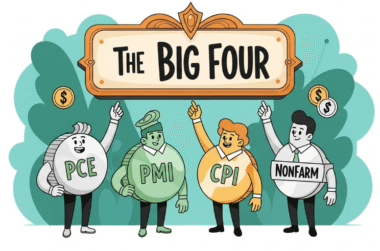Hey there, savvy investor! Ready to dive into a company that literally profits from FOMO? Let’s talk StubHub.
The Reality Check IPO That Humbled Wall Street
Picture this: You’re a hot tech company with billion-dollar revenue, global reach, and a story about the booming experience economy. You price your IPO, ring the opening bell, and… tumble 6.4% on day one. Welcome to StubHub’s less-than-triumphant public debut.
StubHub Holdings (STUB) made its grand entrance on the NYSE on Wednesday (September 18, 2025), raising $800 million after pricing its stock at $23.50 per share. But here’s where things get interesting – the market gave it a decidedly lukewarm welcome. The stock fell 6.4% from its IPO price on its first day of trading, valuing the company at $8.1 billion. Ouch! Apparently, Wall Street wasn’t quite as excited about secondary ticket sales as we thought they’d be.
The Numbers Don’t Lie (And They’re Pretty Impressive)
Let’s get down to brass tacks, because this isn’t just about helping people catch Taylor Swift concerts. The financials tell a compelling growth story:
Revenue Growth That Would Make a Concert Promoter Jealous (Until Recently)
StubHub’s revenue has been on a steady upward trajectory, rising from $1 billion in 2022 to $1.3 billion in 2023 to $1.7 billion in 2024. That’s a 29% growth rate in 2024 alone – the kind of numbers that make CFOs do jazz hands.
But here’s where the music slows down: revenue growth cooled to just 3% in the first half of 2025 compared to the same period last year, hitting $827 million. That puts the company on pace for significantly slower revenue growth after that impressive 29% jump in 2024. This growth deceleration likely explains why Wall Street gave the stock such a chilly reception on day one.
The Global Reach Advantage
More than 1 million unique sellers are using StubHub’s platform, with buyers from more than 200 countries and territories purchasing over 40 million tickets in 2024. The platform supports 33 languages and 48 currencies, positioning itself as one of the largest worldwide markets for live event ticket resale.
The company’s interesting backstory adds another layer: founded in 2000 by current CEO Eric Baker, StubHub was sold to eBay in 2007 (Baker left before the sale). He then founded competitor Viagogo in 2006, and in a plot twist worthy of a Hollywood screenplay, eBay sold StubHub to Viagogo in 2020 for $4.05 billion – essentially returning the company to its original founder. Baker then changed the combined company’s name back to StubHub Holdings. Talk about coming full circle!
Translation: While your local scalper can only serve your neighborhood, StubHub is serving the entire planet.
Value Propositions That Actually Make Sense
1. The Experience Economy Tailwind
StubHub estimated a total addressable market of $726 billion and noted a change in customer behavior over many decades toward giving experiences top priority above tangible things.
Think about it – when was the last time you got genuinely excited about buying a new TV versus scoring tickets to see your favorite band? Exactly. We’re living in the Instagram era where experiences trump possessions, and StubHub is perfectly positioned to capitalize on this shift.
2. The Network Effect Moat
Here’s where it gets interesting from a business model perspective. StubHub operates a classic two-sided marketplace where:
- More sellers attract more buyers (better selection)
- More buyers attract more sellers (larger audience)
- The cycle perpetuates and strengthens over time
It’s the same playbook that made eBay and Amazon unstoppable in their respective markets.
3. Recession-Resistant Revenue Streams
While people might cut back on buying new clothes or gadgets during tough times, they’re surprisingly reluctant to give up experiences entirely. Live events provide emotional value that’s harder to substitute – you can’t exactly stream the energy of being at a live concert in your living room (though we all tried during 2020).
4. Regulatory Clarity Creating Competitive Advantages
The Federal Trade Commission initiated new rules around hidden “junk fees” and deceptive ticket prices on online marketplaces. While this might seem like a headwind, established players like StubHub are better positioned to adapt to regulatory changes than smaller competitors who lack the resources and infrastructure.
The Risks (Because We’re Not Financial Advisors)
Let’s be honest about the challenges:
Recent Performance Concerns and That Cold Wall Street Reception
The company’s recent performance tells a story of a business hitting some speed bumps. That 3% revenue growth in the first half of 2025 represents a dramatic slowdown from 2024’s 29% growth rate, and it clearly spooked investors on IPO day.
Wall Street’s lackluster 6.4% first-day drop suggests the market is concerned about whether StubHub can reignite its growth engine. When you’re pricing an IPO in a market where the average Day 1 return has been 26% this year, falling on your first day is… not ideal.
Regulatory Headwinds
The secondary market faces a patchwork of U.S. laws: 15 states ban or restrict reselling above face value, while others mandate licenses or cap markups. The 2016 BOTS Act targets bot-driven bulk buying, but enforcement is ramping up.
Bottom line: StubHub operates in a space where the rules are still being written, and not all of them will be friendly.
Market Volatility
This was StubHub’s second IPO delay, after market conditions forced them to pause plans earlier. The company is clearly sensitive to market timing, which suggests some underlying business volatility.
The Investment Thesis: Why This Could Be Your Winning Ticket
Valuation Perspective
If StubHub grows 25% next year, that would imply approximately $2.2 billion in revenue and a 3.5x to 4.5x next-twelve-months revenue multiple. These multiples would place StubHub above Uber and CarGurus but below DoorDash.
For a company in a growing market with strong network effects, that’s not unreasonable pricing – especially compared to other marketplace businesses.
The Timing Factor (And Why It Might Actually Be Good News)
Here’s a contrarian take: maybe that 6.4% first-day drop is actually good news for long-term investors. In a year where IPOs have averaged a 26% Day 1 pop, StubHub’s lackluster debut suggests the stock wasn’t wildly overpriced. You’re not buying into peak hype – you’re buying into realistic expectations.
StubHub plans to use the $800 million raised to pay down debt and for general corporate purposes, which shows prudent capital allocation rather than flashy growth spending.
Long-term Demographic Trends
Millennials and Gen Z prioritize experiences over material goods, and they’re entering their peak earning years. This demographic shift should provide sustained demand for StubHub’s services over the next decade.
The Bottom Line: A Ticket Worth Considering, But Not First-Class
StubHub represents a solid play on several converging trends – the experience economy, digital marketplace dominance, and global entertainment expansion. But let’s be honest: this isn’t the slam-dunk growth story we initially thought it might be.
The company has proven it can build and maintain a large-scale business, operates in a market with real competitive advantages, and serves a global customer base. However, you’re buying into a company that just disappointed Wall Street on day one, is experiencing significant growth deceleration, and operates in an increasingly regulated space.
The Final Curtain Call
StubHub’s story isn’t over – it’s just beginning with a more sobering first chapter than anyone expected. The fundamentals of the business remain intact: people still want experiences, live events aren’t disappearing, and secondary markets serve a real purpose.
But this isn’t your typical IPO rocket ship. It’s more like buying a reliable touring bus – it’ll get you where you’re going, but don’t expect to travel in luxury or break any speed records.
The market has spoken, and it’s saying “show me more consistent growth before I get excited.” That might actually make this a more interesting long-term play for patient investors who believe in the experience economy thesis but want to buy without the hype premium.
Just remember: sometimes the best tickets are the ones that don’t sell out immediately. They might not have the best view, but they’re a lot easier on your wallet.
Disclaimer: This case study is for informational purposes only and should not be considered investment advice. Past performance does not guarantee future results. Please consult with a qualified financial advisor before making investment decisions. Also, the author may or may not be bitter about missing that one concert in college.








